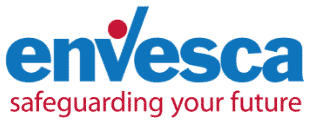Can you be left alone at work?
In this article, we answer the questions “Can you be left alone at work?” as well as other questions we frequently get asked by our customers.
So, what is lone working and can you be left alone at work?
A lone worker is an employee who performs an activity that is carried out in isolation from other workers without close or direct supervision. Such staff may be exposed to risk because there is no one to assist them and so a risk assessment may be required. Lone working is not illegal, but it must be risk assessed properly and employees must not be asked to carry out lone working if it is unsafe to do so. A lone worker should never be put at greater risk than any other employee. The risk assessment must be put in place before the employee is expected to carry out the work in that situation.

My employees go out and visit clients by themselves so they are not lone working, are they?
They may not be alone in the sense that they have no contact with other people, but they are isolated from other members of their employer’s organisation. In some ways, this may expose them to more risk than those employees who work completely on their own. A high-profile, but tragic example is the Suzy Lamplugh case 30 years ago. Suzy worked as an estate agent and disappeared whilst showing a client around a property. This case demonstrates how vulnerable employees who work remotely from their employer’s premises are.
Does this mean that I cannot send individual employees to appointments anymore?
No, but what it does mean is that you need to risk assess and consider how to keep your employees safe if you are asking them to do this type of work. Communication is much easier these days than it was in Suzy’s time due to the widespread use of mobile phones so keeping in contact is not difficult. It is, therefore, easier to put into implement personal safety measures and systems. Personal safety tips to consider include:
- Leaving details of movements during the day, including travel routes, names of clients and appointment times.
- Making telephone contact with supervisors during the day at pre-arranged times.
- If an employee is public-facing they should be trained in recognising early signs of aggression and how to deal with it before a situation arises.
Employees should be encouraged to trust their instincts. If they visit clients at home and something does not feel right they should not enter the premises.

My employees are lone working within company premises, what precautions do I need to take?
You must make sure that you are not expecting them to carry out high-risk activities when they are on their own. High-risk activities include manual handling of heavy items, working at height, working with live electricity or working in a confined space. You should also consider emergency arrangements such as how will the worker raise the alarm if they are injured or taken ill and what to do in the event of an emergency.
One of my employees has a serious medical condition, can I ask them to work alone?
You will need to carry out a specific risk assessment for the person. You would need to consider how likely it is that they may be taken ill or become incapacitated, how easy it would be to raise the alarm and does the work present them with a specific risk. It may be that the risk to the employee is too high to allow them to work safely, in which case you should not ask them to work alone.
If you have a question or enquiry about health and safety, please call the team on 01452 502113 or complete our enquiry form.
Find this helpful?
Signup to our email notifications to receive alerts when we publish new blogs. We promise not to spam your inbox, you will just get a short snappy intro to Health and Safety articles we think you will love.
"*" indicates required fields

7 Secrets to Risk Assessment
If you’ve got a question or query, please contact our super friendly team, they will be delighted to help you!
Simply get in touch via phone or email.

Free
Resources &
Downloads
Informative. Useful. Practical.
Here at Envesca we believe that we are good at giving proactive, sensible and useful advice. Below you will find some free resources that you can download on a host of subjects that will help you and your business.
Training Available
Envesca offer a number of different training courses, which offer advice and guidance on these topics.





